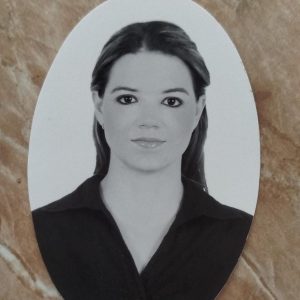Rotator Cuff Tendinopathy vs. Partial Tear: When Do MSCs Help?
Shoulder pain from rotator cuff tendinopathy or a partial‑thickness tear can make reaching, lifting, and sleep difficult. Most patients start with activity changes and physical therapy. When progress stalls—and surgery is not desired—mesenchymal stem cell (MSC) therapy may be considered. This guide explains how we approach each condition at Cellular Regeneration Clinic (CRC) in Tijuana, what the likely results look like, and how to pair stem cells with rehab for meaningful function gains.
Tendinopathy vs. Partial Tear—What’s the Difference?
| Feature | Tendinopathy | Partial‑Thickness Tear |
|---|---|---|
| Pathology | Overuse‑related tendon matrix change and bursal irritation; no frank split | Actual fiber disruption (articular, bursal, or intrasubstance) without full detachment |
| Typical Pain | Painful arc 60–120°, overhead fatigue, night pain | Sharp pain with reach/lift, sleep disturbance, sometimes weakness |
| Imaging | Ultrasound/MRI shows thickening, tendinosis; intact fiber continuity | Ultrasound/MRI shows fiber split; size and location guide treatment |
Where Do MSCs Fit—and What Results to Expect?
Tendinopathy (No Tear)
- Goal: Reduce pain and improve function by calming bursal inflammation and supporting tendon matrix remodeling.
- Approach: Ultrasound‑guided subacromial bursa and tendon‑sheath delivery of donor‑derived MSCs/exosomes; often combined with gentle needle tenotomy.
- Typical results: Pain relief within weeks; mobility and strength gains over 2–4 months with structured rehab. Many patients avoid injections of repeated steroids.
Partial‑Thickness Rotator Cuff Tear
- Goal: Decrease pain and support biologic healing along the tear margin and enthesis.
- Approach: Ultrasound‑guided placement of MSCs/exosomes into the tear bed + subacromial space; adjunct tenotomy to stimulate repair.
- Typical results: When paired with rehab, many patients improve daily function and avoid or delay arthroscopy; tendon remodeling typically unfolds over 2–6 months. Full‑thickness retracted tears still need surgical evaluation.
What We Use at CRC
- Allogeneic biologics only: We do not harvest cells from patients. CRC uses rigorously screened umbilical‑cord MSCs and exosomes from our COFEPRIS‑licensed in‑house lab in Tijuana, with documentation of purity, sterility, viability, and cell count.
- Image‑guided precision: Real‑time ultrasound targets the tendon split, bursa, and enthesis while avoiding neurovascular structures.
- No embryonic cells.
Who Might Be a Candidate?
| ✅ Consider MSCs/Exosomes | ⚠️ Prefer Other Options / Evaluate First |
|---|---|
| Tendinopathy or partial‑thickness tear persisting ≥6–12 weeks despite PT/activity changes | Full‑thickness retracted tear, significant weakness, traumatic avulsion—surgical consult |
| Patient prefers to avoid repeated steroids or early surgery and can commit to rehab | Active infection, uncontrolled diabetes/hypertension, bleeding disorder |
| Imaging confirms target and size/location suitable for injection | Poor rehab adherence or heavy overhead work that cannot be modified |
Treatment Day—Ultrasound‑Guided Delivery
- Consult & planning — history, exam, review of MRI/ultrasound; goal setting.
- Biologic preparation — selected allogeneic MSCs/exosomes are thawed and prepared; certificate of analysis reviewed with you.
- Injection — local anesthesia; precise placement into the tear bed/tendon sheath and subacromial bursa. Needle tenotomy may be used to stimulate a healing response.
- Recovery — sling for comfort if needed; icing; same‑day discharge with a staged rehab plan.
Rehab Timeline
| Phase | Timeframe | Focus |
|---|---|---|
| Calm | Week 0–2 | Pain control, pendulums, scapular setting; avoid heavy overhead work. |
| Mobilize | Week 3–6 | Active‑assist ROM, posterior capsule mobility, gentle isometrics. |
| Strengthen | Week 7–12 | Rotator cuff and scapular strengthening; kinetic chain work. |
| Return | Month 3–6 | Overhead endurance, sport/work‑specific tasks; test–retest. |
Risks & Safety
Most patients experience temporary soreness or swelling at the injection site. Serious complications (infection, bleeding, nerve irritation) are uncommon but possible with any procedure. We screen carefully, use sterile technique, and coordinate with your treating clinicians.
Why Choose CRC
- COFEPRIS‑licensed in‑house lab with documented quality control.
- Ultrasound‑guided shoulder procedures by experienced physicians.
- Integrated team—orthopedics, imaging, and rehab—under one roof.
- Convenient Tijuana location, ~20 minutes from San Diego Airport.
Meet our Medical Team, explore Our Clinic, and learn about our House Lab. If you’re researching stem cell therapy in Tijuana for shoulder injuries, our team can help you compare options and timelines.
Educational content only; not a diagnosis or treatment plan. For personal guidance, please schedule a CRC consultation—con gusto consultaremos con un especialista de CRC.


